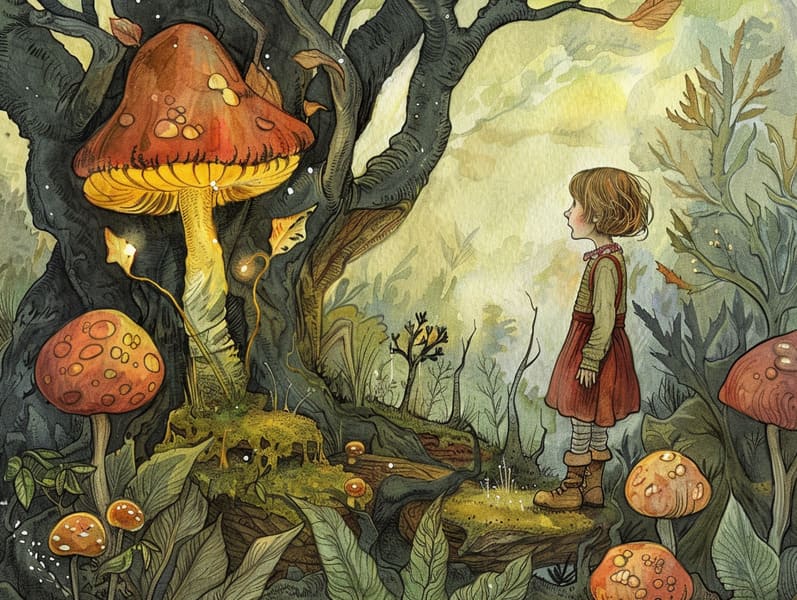Appreciating the Joy of Nightfall Fairy Tales: Developing Prized Occasions with Your Little Ones
Appreciating the Joy of Nightfall Fairy Tales: Developing Prized Occasions with Your Little Ones
Blog Article

Evening is a sacred time for parents and children. It’s a time to wind down, snuggle, and partake in the wonder of stories.
For decades, nightly tales for children have been a beloved practice, offering more than just a way to go to sleep. They provide an moment for connection, development, and stimulating vision.
Bedtime Stories: Why They Matter
Sleep stories for kids mean more than a way to wrap up the day. They play a important role in a child’s evolution and in building the caregiver-child rapport. Here’s why they are significant:
1. Quality Time: Sharing bedtime stories builds a special period of closeness between adults and their kids. It’s a moment of togetherness that helps children feel loved and safe.
2. Language Skills: Listening to stories helps children develop their verbal abilities. They grasp new language, understand sentence structures, and improve their listening and understanding abilities.
3. Creative Thinking: Kids' stories usher them to enchanted worlds, sparking imagination. They picture characters, settings, and adventures, which energizes their inventiveness.
4. Emotional Skills: Children’s stories often include characters facing problems and reactions. These narratives help kids grasp and navigate their own feelings, promoting emotional maturity.
5. Mental Development: Absorbing a narrative helps children develop concentration, recall, and critical thinking skills. They enhance to follow lines of thought, remember facts, and foresee consequences.
Including Bedtime Stories Nightly
Creating a bedtime routine that incorporates reading narratives is manageable and satisfying. Here’s how to develop a beloved part of your sleep-time practice:
1. Choose a Comfortable Spot: Opt for a comfortable place where you and your child can cuddle without interruptions. A relaxing bed or a comfortable reading nook works great.
2. Pick the Right Time: Determine a consistent time each night for narratives. Predictability helps children anticipate and makes the custom more manageable.
3. Select Stories by Age: Opt for tales that are right for your child’s age. Little kids might appreciate books with pictures with clear stories, while more mature kids may be drawn to detailed stories with more involved stories.
4. Interact with the Story: Ensure the tale feel vivid by doing different voices and accents, adding special sounds, and motivating your child to engage. Ask stuff about the story to hold their attention.
5. Make a Peaceful Setting: Turn down the lights, use calm voices, and create a tranquil environment to help your child wind down.
Locating Top Bedtime Stories
There are endless places where you can find perfect bedtime stories for children. Here are some suggestions to try:
1. Kids’ Literature: Go to your community library or bookstore to find a diverse selection of bedtime stories for kids. Looking through the selections together can be a great activity that also gives children to choose stories that appeal to them.
2. Online Resources: There are many sites that offer free bedtime stories. Sites like kids' story platforms provide a variety of short stories for kids that awesome site you can read online. These choices are great for finding new and interesting stories without fees.
3. Audiobooks and Apps: For nights when you’re too weary to read, use audiobooks or storytelling apps. These can provide a soft-spoken reading to read your child a story, ensuring they still get their bedtime story fix. Apps often offer interactive features that can keep kids interested further.
4. Custom Stories: Craft your own stories tailored to your child’s hobbies. Personalized stories can be especially engaging and meaningful. You can involve your child in the narration process, making them a part of the adventure.
The Good of Short Stories
Quick stories for bedtime are very useful for bedtime. They provide all the advantages of longer stories but are more concise, making them perfect for winding down before sleep. Here’s why short stories are a ideal choice:
1. Simple and Clear: To-the-point tales are easy and easy for kids to get, even after a long day. They can easily grasp the tale and enjoy the story without becoming distracted.
2. Quick Engagement: Concise stories promptly engage children, keeping their interest and creativity. This makes them perfect for keeping bedtime rituals easy yet enjoyable.
3. Variety and Flexibility: Quick stories provide for variety in your bedtime reading. You can get a different story each night, keeping the habit exciting and exciting for your child.
4. Time Efficiency: For busy parents, concise narratives are a quick way to verify children still get their nightly dose of storytelling. They fit well into a busy schedule while still offering the full good points of a bedtime story.
The Captivation of "Read Me a Story"
The simple phrase, “Tell me a tale,” can reveal a world of magic for children. Saying yes to this request not only addresses a child’s need for attention and engagement but also fosters lasting occasions. Here’s why it’s special:
1. Bond: Reading to your child develops a deep emotional relationship. It’s a time for closeness, sharing, and bonding.
2. Heritage: Creating a bedtime story tradition creates a prized tradition that children anticipate every night. It’s a tradition that can be transferred through generations.
3. Development Together: As you read aloud, you’ll experience your child’s advancement and growth. Their questions, reactions, and understanding of the stories evolve, offering insights into their developing minds.
4. Protective Space: Bedtime stories provide a safe space for children to understand emotions, face fears, and find comfort in the familiar presence of a parent.
To Conclude
Bedtime stories for kids are a valuable tool for developing a child’s growth and forming unforgettable memories of closeness.